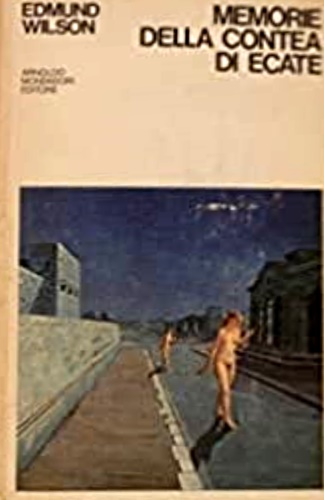 Wilson, Edmund.
Memorie della Contea di Ecate.
Wilson, Edmund.
Memorie della Contea di Ecate.
Traduz. di Franco Salvatorelli e Luciana Spallino Bulgheroni. Milano, Arnoldo Mondadori Editore
1970,
cm.13,3x20,5,
pp.424,(8),
legatura ed. in imitlin, titoli in oro al dorso, sopraccoperta fig. a colori.
Coll. Scrittori Italiani e Stranieri.
Ècate, la dea greca delle notti e delle strade che accompagnava le anime dei morti, e i racconti della contea sono un affascinante e funebre omaggio alla giovinezza, a un mondo e a una cultura che non ci sono più. La Contea di Ecate è un'immaginaria comunità che vive ai margini della metropoli di New York, il centro delle fantasie sessuali della provincia americana, in un'atmosfera di perenne irrealtà e i personaggi che la percorrono sono uno diverso dall'altro, ma sono tutti accomunati dalla stessa aura di dannazione. Pubblicato negli anni Quaranta negli Stati Uniti, fu quasi subito ritirato dalle librerie perché accusato di oscenità. Wilson fu uno dei primi a rendere letterario quanto fino ad allora era rigorosamente rinchiuso entro le mura domestiche.
Usato, molto buono